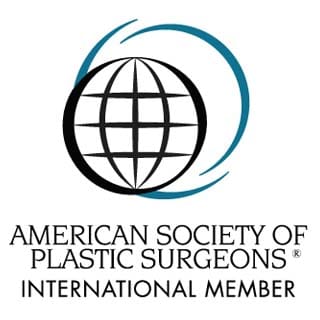
Nipple reduction is a surgical procedure used to improve the structure and shape of the nipple. The operation is most commonly done for cosmetic purposes. Most of the candidates report that they are not happy with their nipple size and want to correct it. Nipple reduction can be performed on both women and men. Often, this cosmetic procedure is combined with other plastic surgeries such as breast augmentation, breast lift, breast reduction and so on.
If you feel uncomfortable because of the size of your nipples, nipple reduction surgery can help you improve them permanently. Here, you will find a short overview of what nipple reduction involves and who is an ideal candidate for such an operation, how it works, and what outcomes it can produce.
It is a simple technique where the plastic surgeon removes excess tissue along the side of the nipple. After that, the top is sewn to the base with regular or dissolvable sutures. Here are the basic steps of the surgery.
Nipple reduction is a surgical technique used for reshaping and improving the appearance of nipples that are overly projecting. Thus, they often tend to fold over and sometimes hang downward. This condition is known as nipple hypertrophy and is most often seen in older women who have breastfed. Sometimes, men who have hormonal imbalances are also affected by nipple hypertrophy and asymmetric nipples.
Nipple reduction is a simple technique and can be done under local anaesthesia. However, it might be not suitable for women who are planning to become pregnant because this surgery can reduce the ability to breastfeed. Nipple sensation might also be changed after the procedure.

There are various surgical techniques for nipple reduction. For example, reducing the nipple length can be done in two ways – by removing some excess nipple tissue at the base of the nipple or by removing the amount of nipple that sticks out too much. Nipple diameter is usually reduced by removing a little wedge at the base of the nipple. As we mentioned above, nipple reduction can also be added to any other breast procedure, including areola reduction, breast lift, breast augmentation or breast reduction.
What technique for nipple reduction will the surgeon use depends on the way nipples appear and how you want them to be. Some patients want them much flatter, others want to achieve more natural results, and others want to preserve more of the nipple height and width. Your doctor will discuss all of these with you during your initial consultation and advise you on what will be best for you. Nipple reduction surgery must be performed only by a board-certified plastic surgeon.
Ideal candidates for nipple reduction surgery are women and men with too long, too big, stretched or asymmetrical nipples.
About 10% of women complain of deviations in the shape, projection and symmetry of the nipples. These abnormalities often occur after puberty or as a result of previous surgery. This can lead to pain and tenderness. Sometimes unpleasant changes in the size and shape of the nipples occur after weight loss or weight gain.
Pregnancy and breastfeeding also cause changes in the breasts and areolas, such as sagging or enlarging of the nipples and areola size. That is why many women undergo surgery after pregnancy.
Nipple reduction is also suitable for men who have gynecomastia or the so-called “puffy nipples”. This condition is caused by an excess of breast tissue or enlarged mammary glands under the nipple, which pushes the nipple and makes them more protruded. Those prominent nipples lead to physical and aesthetic discomfort.
Statistics show that up to 60% of men worldwide and between 30% – 60% of adolescent men suffer from gynecomastia at some point in their lives. This condition is most common in young people between the ages of 13 and 17 and men over the age of 60.
The recovery of nipple reduction is relatively fast because the tissue usually heals very quickly. A few days after the operation, you are more likely to experience pain and swelling. You will need to wear a protective bandage for one or two weeks after surgery. It will help lessen swelling and speed up the healing process. You might be given antibiotic ointment that you will have to apply on the incisions site. Strenuous activities, sexual activity and heavy lifting should be avoided for around 2 – 3 weeks. It is recommended to take 1 or 2 weeks off from work. However, if you do not feel significant pain, you might be able to work from home the next day.
Some of the common side effects of nipple reduction procedures are swelling, bruising and mild discomfort. These are just normal parts of the healing process. Some of the rarer surgical complications include infection, bleeding, loss of nipple sensation or poor healing of the incisions. Also, you should be aware that you might not be able to breastfeed after nipple reduction surgery. The scars usually recover well and significantly faded over a period of time.
Your surgeon will discuss all risks and complications during your initial consultation and explain how they will be treated if they occur.
Nipple reduction surgery should be done by an experienced plastic surgeon who is able to perform the procedure precisely. The doctor has to consider not only the aesthetic of the nipple but also its sensation and function. The technique must be carefully chosen so that it preserves the nipple’s nerve supply and milk ducts as much as possible.
If you would like to learn more about this procedure, what techniques are used or how much nipple reduction costs, then please contact Shens Clinic.
Monday – Friday: 09:00am – 06:00pm
Saturday: 09:00am – 02:00pm
Sun and PH: Closed
(Strictly by appointment only)

Copyright ⓒ Shens Clinic | Privacy Policy | Terms and Conditions .